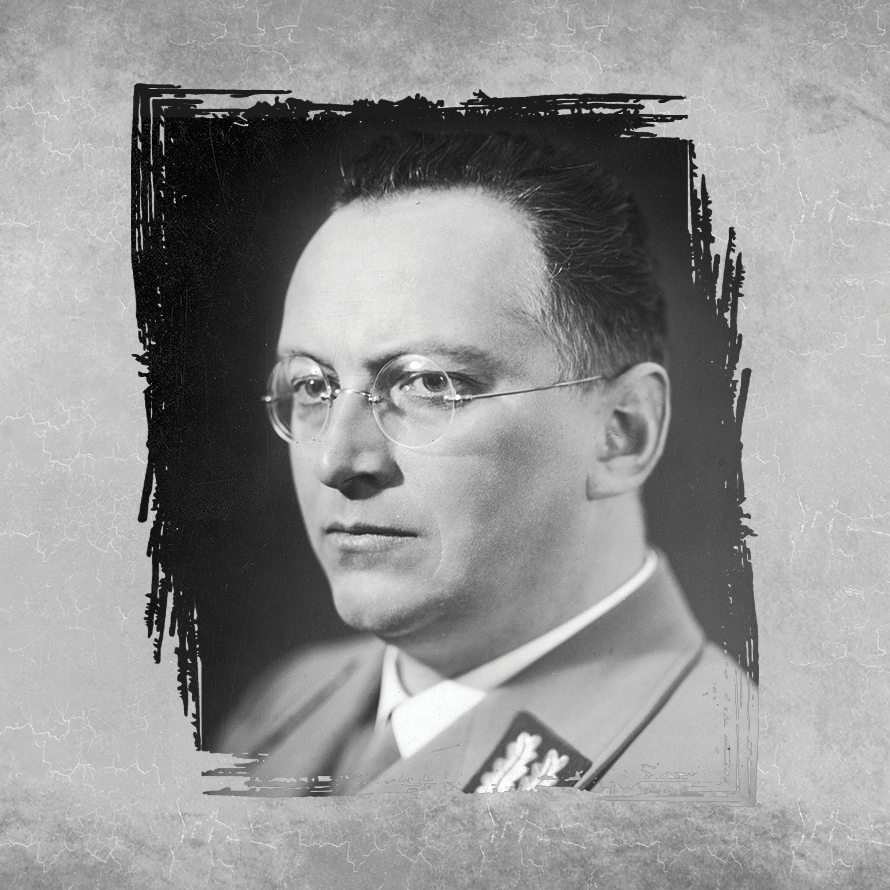PERSONALITIES
KONRAD HENLEIN
BACK TO LIST

Konrad Henlein
Birthdate: May 6, 1898
Date of death: May 7, 1945
Sudeten-German politician Konrád Henlein was born on 6 May 1898 in Vratislavice nad Nisou in the family of a factory clerk and executive director of the companies belonging to Konrád Henlein and his wife Hedwiga, née Dvořáčková. She was the daughter of Ignác Ginzkey Eduard Dvořáček, a clerk in a factory in Vratislavice, and of his German wife Augusta, née Nöhringová. Hedwiga and her siblings were of German nationality. The Henlein family moved later on to the nearby Rychnov u Jablonce nad Nisou, where the father Konrád Henlein became an accountant and then even the director of the local Spořitelní a záložní spolek (Savings Society). He was also the member of Rychnov town council, and during the years 1914-1918 the mayor. When Konrád was young, he studied at the business school in Jablonec nad Nisou. His grades were not that good. After the World War I ended, he volunteered to fight and, since November 1917 till the end of the conflict he spent the period in captivity in Italy, he finally got a job in Jablonec as a clerk in a financial institution Kreditanstalt der Deutschen. He also became the member of the Rychnov branch Svaz německých cvičenců (Deutscher Turnerverband – DTV; Association of German Gymnasts), an organization uniting German gym clubs in Czechoslovak Republic (founded in 1919). In 1925, he left the career of a bank clerk for good and started to work only in the field of physical education. In October of the same year, he got a paid post of a PE teacher in a gym club in Aš. Since May 1931 he held the position of the chief of PE on the board of the committee of DTV, whose member he became already in May 1928. He also got married in Aš. He married the six-year younger Emma Luisa Geyerová, the daughter of a local confectioner and café owner. Shortly before the wedding, he changed his religion from Catholic to Evangelic.
In 1933, when there was a threat from Czechoslovakian offices of terminating the activities of negativistic parties Deutsche national-sozialistische Arbeiterpartei (DNSAP), in fact the branch of the German Nationalsozialistische deutsche Arbeiterpartei (NSDAP), and Deutsche Nationalpartei (DNP), which in the neighbouring Germany cooperated closely with the German National Socialist Party of Dr. Alfred Hugenberg, the threat became reality on 4 October 1933, their leaders and Konrád Henlein agreed that their organizations would merge into the newly-established Sudetendeutsche Heimatfront (SHF) whose leader would be Henlein. It was established in the beginning of October 1933. On 30 April 1935, it was renamed Sudetendeutsche Partei (SdP) and after the following elections in May it became in terms of the number of votes the strongest party in Czechoslovak Republic. K. Henlein led this organization till its merger with NSDAP on 5 November 1938. Even afterwards, however, he remained in the leadership of his former party members because on 30 October 1938 Hitler appointed him the leader of most of the occupied territories which were created on the same day as administrative districts of NSDAP Sudetenland. Even before that, since the May 1935 elections until the separation of the border areas in October 1938, Henlein was the representative of SdP, he was the member of the National Assembly of Czechoslovak Republic. After the seizure of the Czech border area by Germany, Henlein was appointed by Hitler the Reich superintendent for Sudetenland, that means also for Cheb and the entire Cheb region (he started to work in this position after the termination of the military administration of the occupied territories on 20 October 1938) and since 1 May 1939 according to the law of the Reich government concerning the administrative development in the Eastern march and Sudetenland he was in the leading position of this territory as the Reich governor. He also got the rank of Gruppenführer SS (since 20 June 1943 Obergruppenführer) and on 4 December 1938 he was as the only candidate elected a member of the Reich Chancellery meeting. After the occupation of the remaining territory of Czechoslovak Republic he was temporarily holding the position of the head of civil administration of the occupation army; it was until the civil administration was replaced by the administration of regular protectorate authorities on 18 April 1939. Together with his wife Emma Luisa he had altogether five children: Gudrun (* 1928), Ingrid (* 1930), Horst (* 1934) and twins Gerhild and Ortrud (* 1939).
After the birth of the last two girls on 13 March 1939, Adolf Hitler satisfied the request of Ing. Friedrich Bürger, the former SdP deputy in Berlin, and allocated to him 100,000 Reich Marks as financial aid for K. Henlein so that he could buy a more spacious apartment than the villa which had been confiscated from Jews and which the Henleins got in the new work place of the Reich Superintendent, later the Reich governor in Liberec, the capital of Sudetenland. He and his family returned to the Cheb region and with the help of this amount of money he bought from Ing. Dr. Minan Babuška, a Prague architect, a manor farm estate Manský Dvůr (Lehnhof), located in the north-west direction from Dolní Žandov (Untersandau) – between Cheb and Mariánské Lázně (Marienbad). However, several years later, the return to the Cheb region became fatal for him. On 7 May 1945 Henlein left Liberec and started off to Cheb with the intention of negotiating with the Americans. Nevertheless, he was detained by the American military police and transported to a prisoner camp in Pilsner, where he committed suicide by cutting the veins of both of his wrists with shards of the lenses from his glasses after having found out that nobody from the USA officials in charge was not willing to negotiate with him and that he was considered war criminal to be given out to Czechoslovakia.
(SOkA Cheb, Petr Cajs)
Show more


 OFFICIAL WEBSITE OF CITY CHEB
OFFICIAL WEBSITE OF CITY CHEB
 TOURIST INFOCENTRE
TOURIST INFOCENTRE
 HISTORICAL CHEB FOUNDATION
HISTORICAL CHEB FOUNDATION

 CULTURAL CENTER SVOBODA
CULTURAL CENTER SVOBODA
 WEST CZECH THEATER CHEB
WEST CZECH THEATER CHEB
 CITY LIBRARY IN CHEB
CITY LIBRARY IN CHEB

